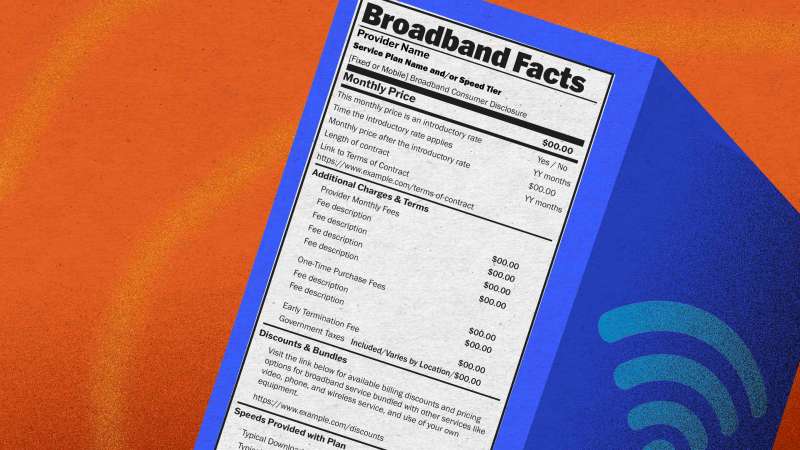New 'Broadband Labels' Could Make Internet Fees Easier to Understand, Compare

What does a high-speed internet plan have in common with a box of Froot Loops?
Starting Wednesday, the Federal Communications Commission, or FCC, is requiring internet service providers to clearly display their pricing and service details on a “broadband label” directly inspired by nutrition facts found on grocery items.
“We want to make basic information about broadband internet service easily recognizable and easy to understand,” Alejandro Roark, the FCC’s consumer bureau chief, said Tuesday on a call with reporters.
The ultimate goal is twofold: One, make it simpler for everyday Americans to comparison-shop for both mobile and wired internet plans. And two, force companies to “compete on offering better terms, not just more confusing ones,” said Jon Donenberg, deputy director of the White House National Economic Council.
Before this rule, internet providers often charged a litany of fees — such as those for installation, early cancellation, modems and additional data usage — all on top of the monthly cost of service, which itself may increase over time.
While the rule does not ban these add-on fees explicitly, it does force them to the forefront at the point of sale, both online and in-person. The fees, which were usually hidden in the fine print, “cannot be buried” anymore, Roark said.
Broadband labels: What must be included?
According to the FCC, these broadband labels must be clear and follow a standardized template for each plan a provider offers. The labels must include “broadband prices, introductory rates, data allowances and broadband speeds,” plus “links to information about network management practices and privacy policies.”
Additionally, the label should include the monthly price after any introductory rates expire as well as an itemized list of charges, such as modem rentals, Wi-Fi extenders, termination fees and more.
Large internet service providers with more than 100,000 subscribers are required to start displaying broadband consumer labels Wednesday. (This includes companies like AT&T, Verizon and Xfinity.) Smaller providers with under 100,000 subscribers have until Oct. 10 to do so.
If a provider isn’t displaying the information clearly and correctly, consumers can file complaints directly with the FCC. The agency will investigate and possibly enforce penalties on the internet companies depending on the severity of the violations.
Millions may soon be shopping for internet plans
The FCC’s broadband label requirement is part of a broader initiative by the Biden administration to expand access to high-speed internet. The rollout of the price transparency measure comes just before millions of Americans are potentially forced to find new internet plans — or go without a connection.
In 2021, the bipartisan infrastructure deal funneled over $70 billion to build broadband infrastructure across the country and create federal programs to help Americans afford internet service, including an order to the FCC to implement the broadband label requirements. Part of that funding went toward creating the Affordable Connectivity Program, a federal subsidy that provides up to $30 per month (or $75 to homes on tribal lands) to assist folks with their internet bills. More than 23 million Americans enrolled in the program, but it’s quickly running out of money.
By the end of April, the FCC says the full internet subsidy will end. (Some folks may get a partial subsidy in May.) In effect, when the subsidy expires, internet bills for over 20 million Americans will soar, pushing many to shop for affordable plans and others to lose internet access.
Earlier this year, a bipartisan group of lawmakers in both Congressional chambers introduced a bill to keep the ACP funded, but it has yet to come to a vote.
More from Money:
Biden's New Student Loan Forgiveness Plan Could Cancel Debt for 30 Million
6 Places Giving Free Money to Residents Through Guaranteed Income Programs
How to Get Access to the IRS's New Free Tax Software

